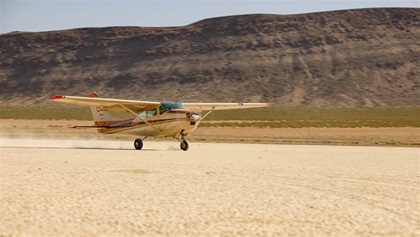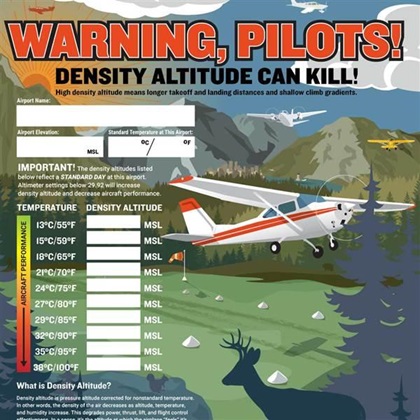Beginner backcountry
An introduction to flying in remote places
Rough and tumble






But it is also an environment unforgiving of mistakes that requires additional preparation and training to be done safely. Here’s a primer on the backcountry, factors to consider, and how you can get started.
When you first think of the backcountry, you might think of the jagged peaks of Alaska and the glistening creeks of Idaho, and you’d be right, but the backcountry is broader than that, and there’s almost certainly a backcountry-esque experience somewhere near you.
One way to define the backcountry is to consider how much information you as the pilot have to provide for yourself. Think about it: At a busy Class C airport, you’ll know the current weather and forecast, the runway conditions, when you’re cleared to take off and land, and how many maintenance providers are on the field. There might even be a crew car for you to use at the FBO, and if not, a taxi is probably easy to find. In the backcountry, you’ll have to take care of all this yourself. Weather, runway condition, maintenance, fuel, and even cell service aren’t givens in the backcountry. There might not be any roads for a taxi.
To fly in the backcountry, you’ll need an airplane to suit the environment. Experienced off-airport pilots often prefer fixed-gear, high power to weight ratio aircraft, especially taildraggers, which have good propeller clearance over rough terrain. Professional backcountry pilots also need their aircraft to haul a lot. Retractable gear aircraft—with more moving parts that could break—are rare in the backcountry, as are low wing, low clearance aircraft. This leaves a pretty short list. Cessna 180s and 185s, Cessna 206s, Piper Super Cubs, CubCrafters Carbon Cubs, and Aviat Huskys are favorites. The right pilot with the right energy management can also enjoy the backcountry with something like a Cessna 120, 140, 150, or 172.
Weather, which is always a huge factor in flying, is even more of a factor in the backcountry. Mountain weather is notoriously changeable, and on top of that, many mountain strips don’t have weather reporting. You’ll have to rely on limited weather resources, pireps, and local knowledge to make critical go/no-go decisions, although tools like ADS-B and SiriusXM satellite weather will help.
Air density significantly affects aircraft performance across the board, and most backcountry flying takes place in high density altitude environments. Density altitude is pressure altitude corrected for nonstandard temperature, more easily understood as the altitude where the aircraft “thinks” that it is flying. Most backcountry flying takes place in the summertime, and while the elevation at your airfield might be 5,000 feet, the density altitude could be thousands of feet higher, and your cruise altitude even higher than that. You’ll need to factor density altitude into your flight planning, and likely will need to fly in the early morning when it is cooler.
Navigation is also more challenging in the backcountry, especially when operating below a ridge line as you’ll likely need to for takeoff and landing. Landmarks and structures will be few and far between, and to someone new to the area, the creeks and peaks might all look the same. Even at the relatively slow speeds of something like a Super Cub, looking inside too often at a chart or GPS will keep your eyes inside too much and might lead to a loss of situational awareness or—worst case—controlled flight into terrain. You’ll have to carefully study and prepare for even a short VFR hop to avoid too much head-down time.
You’ll also need to enhance your stick-and-rudder flying. The mountainous backcountry requires some techniques that go above and beyond typical private pilot-level skills. While you learn short and soft field landings before your checkride, it is significantly different to actually need to apply those skills in a short and soft field environment. This a skill you can build proficiency in by practicing landings, becoming comfortable in slow flight, and intimately understanding your aircraft’s performance.
Canyon flying is also different from typical flying in the “front country.” It’ll require slowing down, potentially adding in a notch of flaps and pulling the power back to allow you to fly slower and give you more time and space in the canyon should you need to reverse course. Also, you’ll always choose one side of a canyon to fly very close to—sometimes mere feet away from the canyon wall—in order to give yourself as much space as possible to turn around without hitting the terrain.
Another component of canyon flying is the canyon turn. Canyon turns are generally considered emergency maneuvers to be executed the moment you think (or know) you’re in a box canyon. This high-performance, 180-degree turn will allow you to reverse course in the narrowest distance possible, hopefully avoiding the terrain on the other side of the canyon. Like other flying skills, canyon turns should be practiced often to maintain proficiency.
How you can do it too
Start by seeking out reputable mountain or backcountry training, either through a course or individual instructor. While courses are often costly, the value is high. After you receive training and are proficient enough to fly into the backcountry, take baby steps. Don’t start out with the biggest and baddest backcountry strips unless you want to file a claim with your insurance company and/or keep medflight pilots busy. Build up your backcountry experience in steppingstones, starting perhaps at a paved strip with no AWOS, then an unpaved strip, then an unpaved strip with obstacles, and all the way up to one-way, no go-around, sub-1,000-foot fields in the mountains if that’s your goal.
Once you have that proficiency, remember that maintaining and improving upon it is up to you. Proficiency and skills decay—just because you could do a certain flight safely last year or last month doesn’t mean you can do that same flight safely now.
But beyond all that—the new training, the high-performance aircraft, the careful ground preparation, and more—you’ll need to have solid decision making and risk management. You could be the best stick-and-rudder pilot in the backcountry, but if you can’t accurately assess risk, you’ll end up the subject of an NTSB report sooner or later.
Decision making, contrary to popular belief, can be practiced. Take yourself through “what if” scenarios before you get into them in real life. Know what you’ll do if you’re at an airfield and a moose runs in front of you. Know what you’ll do if you’re at a no-go-around strip and come in high and fast. Know what you’ll do if a wild fire breaks out and smoke turns your intended route of flight IFR. Make the hard decisions before so that the environment doesn’t make the decision for you.
In front country flying, a pilot can make several mistakes or errors and still live to tell the tale. In the backcountry, you can make far fewer mistakes. Your airplane must be in top condition, your skills as a pilot must be sharp, and the weather needs to be unquestionably favorable. The navigation is more challenging, you’ll need to be more self-reliant than in typical everyday flying, and the risk, while manageable, is higher.
If it sounds like a lot of work, it is. But the rewards are immense (as the photography on these pages attest), and the extra steps and prep aren’t optional. If you fly into the backcountry unprepared, you’ll be lucky to fly out.

 Are you sure the field:
Are you sure the field: Density altitude can creep up on you. Print out and fill in these posters for your hangar and local FBO to give yourself and other pilots a cheat sheet for your airport’s DA.
Density altitude can creep up on you. Print out and fill in these posters for your hangar and local FBO to give yourself and other pilots a cheat sheet for your airport’s DA.

